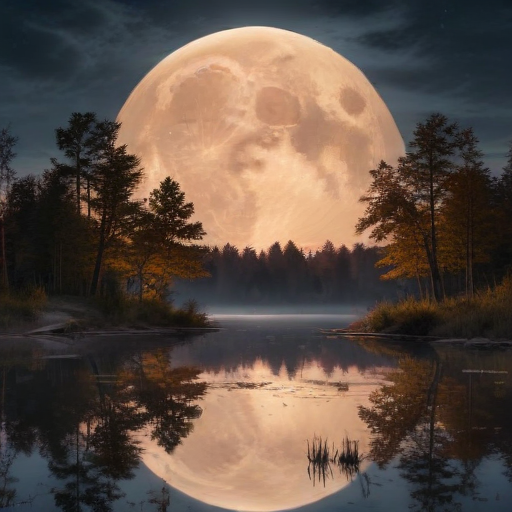The fourth and final “supermoon” of 2024 will reach its peak illumination at 100% on Friday, November 15. However, for those in North America, the most opportune moment to witness this celestial event will be during the moon’s rise in the east on November 16.
November’s full moon is commonly referred to as the Beaver Moon, named after the beavers that typically prepare for winter by constructing their dams in the northeastern United States. Additionally, this moon is sometimes called the Frost Moon or Snow Moon, reflecting the impending arrival of colder winter temperatures across the continent. In the Anishinaabeg tradition, the August moon is recognized as “Baashkaakodin Giizis,” translating to “Freezing Moon.”
This Beaver Moon marks the culmination of four supermoons that have occurred throughout 2024, following the Sturgeon Moon in August, the Harvest Moon in September, and the Hunter’s Moon in October. A supermoon occurs when a full moon coincides with the moon’s perigee, the point in its elliptical orbit where it is closest to Earth. This phenomenon happens when the full moon is within 90% of perigee.
While the moon will be officially full at 4:28 p.m. EST on November 15, the most breathtaking views will be during its rise shortly after sunset, making November 16 the ideal night to see the supermoon. On this evening, the moon should appear about 20 to 30 minutes after sunset across North America.
Notably, if you’re observing the Beaver Moon on the night of November 15, the beautiful Pleiades star cluster, known as the “Seven Sisters,” will be positioned to its lower left. By November 16, the cluster will move to the moon’s upper right as it rises.
Stargazers can enjoy the full moon without any equipment, but using binoculars or telescopes can enhance the experience by revealing fascinating details on the moon’s surface. However, as the moon rises, its brightness increases, which may make direct viewing more challenging.
Looking ahead, the twelfth and final full moon of 2024, known as the “Cold Moon,” will make its appearance on December 15.
This supermoon offers a wonderful opportunity for skywatchers to connect with nature and enjoy the splendor of the night sky. Whether you’re an experienced astronomer or just someone looking to enjoy a beautiful evening outdoors, the Beaver Moon promises to be a memorable experience.
